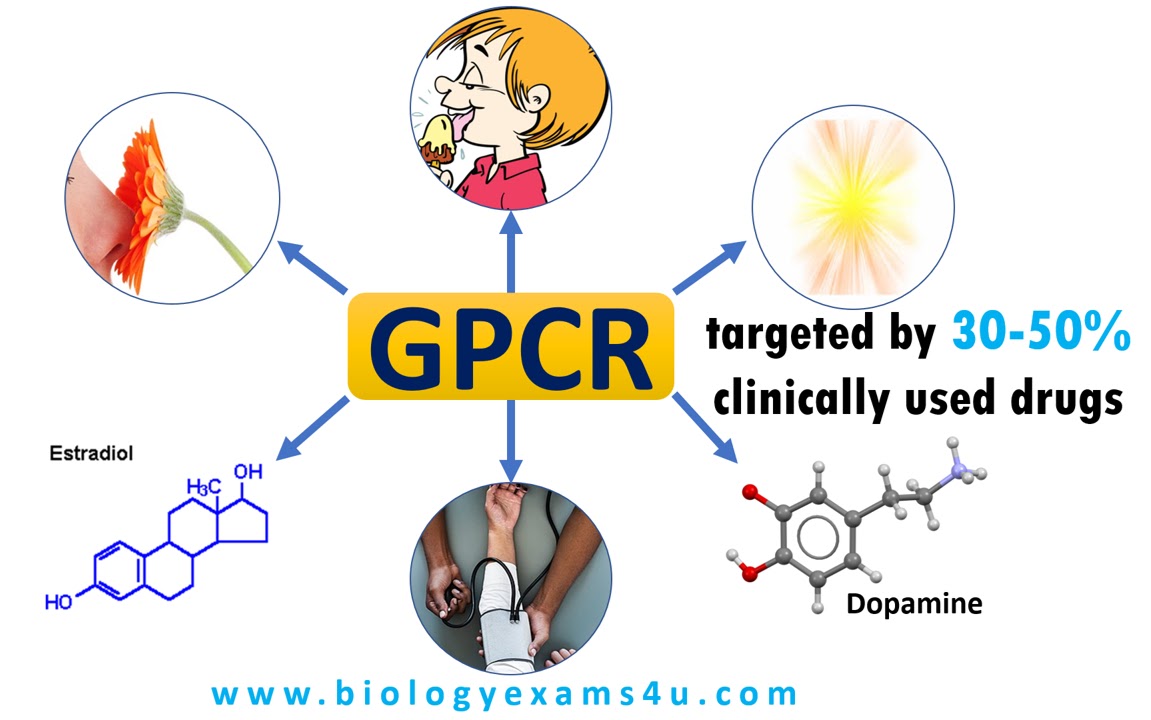GPCRs represent largest family of cell surface receptors targeted by 30-50% clinically used drugs.
GPCR is capable of binding to diverse ligands, ranging from a single photon to large proteins and including ions, odorants, amines, peptides, lipids, hormones, nucleotides, and metabolic intermediates. GPCR control important functions like heart rate and blood pressure.
Structure
of GPCR
- GPCR is a single peptide with a cytosolic region, a ligand-binding extracellular region and 7 hydrophobic transmembrane helices
- (7TM receptors)
- The transmembrane domains are connected via three intracellular and three extracellular loops.
Why
called as G protein coupled receptor?
This
transmembrane receptor is associated with a GTP/GDP binding protein called G
protein.
Structure
of G protein
- Trimeric (α, β, γ subunits)
- α and β subunits have small lipid molecules that anchor them to inner layer of plasma membrane
- GDP bound is the “off” state
- On ligand binding, GDP is exchanged for GTP; thus GTP bound state is the “on” state
- These subunits have many subclasses.
- It is the Gα subunit that confers the name of the G protein.
- For instance, G proteins that stimulate an effector (e.g., adenylate cyclase) are classified as Gs (for stimulatory), whereas those that inhibit an effector are called Gi (for inhibitory).
Steps
in GPCRcAMP Pathway
Step 1: GPCRs undergo conformational change upon ligand
binding and binds to the G protein complex.
Step 2: G-α subunit exchanges GDP (guanosine diphosphate) for GTP (guanosine
triphosphate). This causes the activation of G-α subunit.
Step 3: The active Gα subunit
then separates from the β and γ subunits, and moves laterally in the membrane. Then
activates adenylyl cyclase (AC), that converts ATP to cAMP. cAMP is a second
messenger.
This video summarizes the structure; function and pathways of GPCR
Step 4: Elevated cAMP levels, then activate protein kinase A
(PKA).
Step 5: PKA phosphorylates several enzymes and transcription factors downstream [e.g., cAMP-response element-binding protein (CREB)], causing gene expression that mediate cell growth and differentiation or changes important physiological functions.



